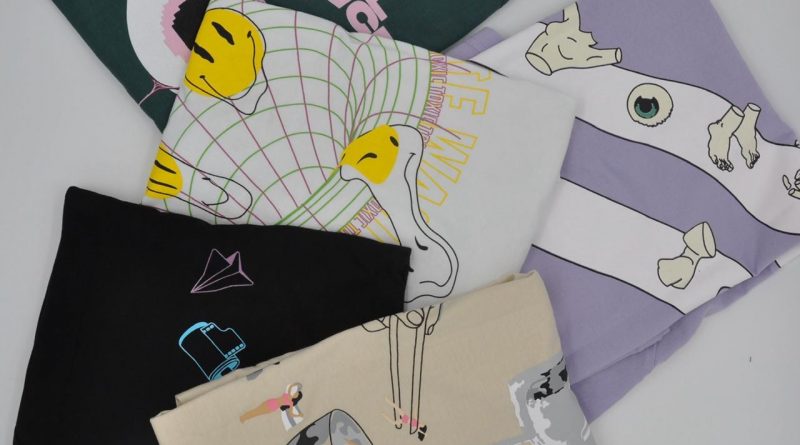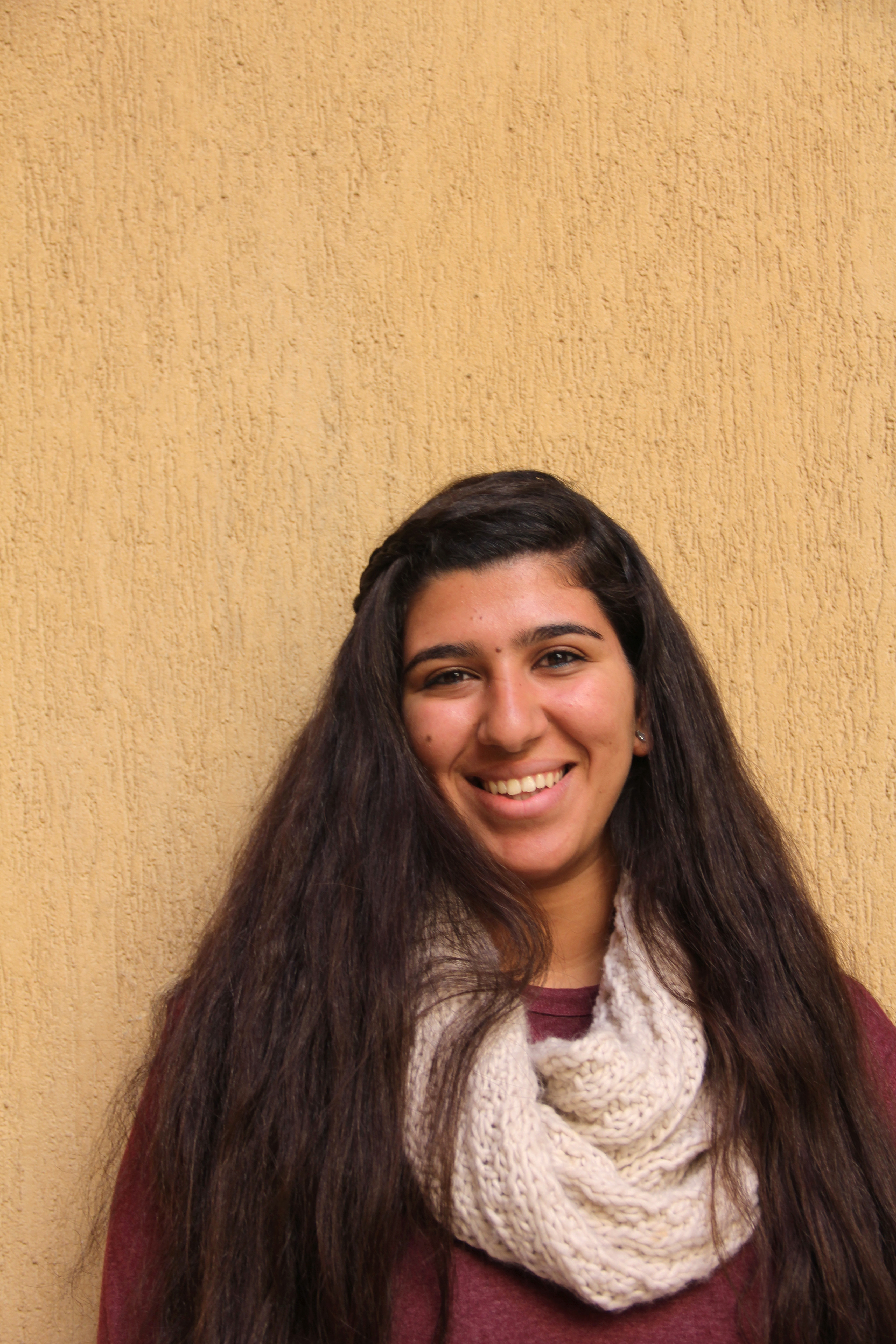AUCians Streetwear is No Waste of Time
By: Lilian Gamal
@LillianGamal
Photo Courtesy of Waste
Three AUC women launched their first online streetwear brand Waste, gained over a thousand followers on Instagram, and managed to sell out their first collection in just under a month.
The three – Management of Information and Communication Technology graduating senior Nour Hesham and Graphic Design seniors Yasmine Yehia and Habiba Hany – are old school friends who formed a strong friendship that lasted into their university days.
“One day we decided to start our own brand. We all love fashion and we all love clothes so we wanted to implement the things that we’d want to buy for ourselves, but never really found in the Egyptian market,” Hesham told The Caravan.
She is responsible for logistical implementation, while Yehia and Hany are the designers.
The three of them bring different perspectives to the table, which helps in bouncing fresh ideas off of each other.
“Having that base as really good friends is something that connects us beyond anything that is business-related,” Hesham said.
She adds that during quarantine there emerged a number of home-run businesses and many people started their own clothing brands.
For the three lifelong friends, there was no time to waste.
In terms of the brand’s name, the founders discussed among themselves what is deemed as valuable or as disposable. They found that the word “waste” stands out; it’s memorable, short and striking.
They devised the novel idea of creating five staple icons – a balloon dog, a juice box, a paper plane, camera film roll, and a game boy – to visually symbolize the brand, while the brand’s logo is typography.
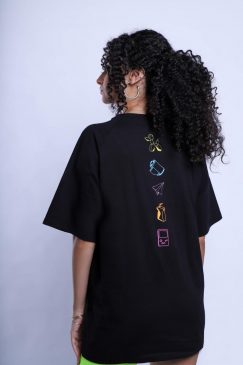
These icons were specifically chosen to resemble the ever-changing versatility of value these items may hold. The idea is to create both – a visual illustration for Waste’s branding and to transform these illustrations into collectibles.
The five icons come in the form of little square tags sewn to the bottoms of the t-shirts. These tags illustrate and brand Waste. Each T-shirt, for example, has a random tag so customers never receive the same icon.
“Every single object chosen as a brand icon had an idea behind it as it was once seen as valuable, but it could be easily seen as waste,” Hesham said.
The film roll and paper planes were chosen as multi-faceted elements that could connote various meanings.
“The invention of film cameras and having them store memories of your life is so valuable because you can always go back to them,” Hesham said.
But with digital media there’s been a qualitative shift in how film cameras are culturally and aesthetically perceived.
In addition to film cameras, Hesham spoke of nostalgic paper airplanes that children learned to make growing up in school. These kinds of items were chosen to be collectibles because they hold equivocal meanings.
“If you remember during school days, we’d have paper planes and we’d throw them in class, and write notes in them. It was something that was always so fun, but now if someone gave me a paper plane, I’d think that’s something that’s a complete waste of paper,” Hesham explained.
As far as inspiration goes from conception to execution, Waste founders brainstorm ideas together and settle on the kind of aesthetic they seek to implement.
“Waste is an experimental brand. We aim to diversify the streetwear options in Egypt. So in our first collection we wanted to create our own little world. Something that’s a bit dysfunctional but fun,” Hesham said.
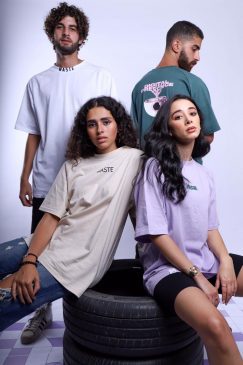
Hesham mentioned that she, alongside Yehia and Hany, wanted to draft unique designs that stand out from conventional fashion that has been deemed as too generic.
“We get inspired and derive our own thematic designs from elements and objects found all around us,” Yehia told The Caravan.
One of the concept designs of the Waste collection is a melting, pixelated digital eye that has a resting watch on top. Hany said that this design illustrates digital engagement and the over-consumption of social media as a vice of digital presence.
Furthermore, all types of packaging were too banal for the three girls, given what Waste represents. Collectively, the founders decided that these very same icons would materialize into the packaging of Waste merchandise.
Waste T-shirts are packaged into juice boxes made of cardboard, the juice box being one of the main staple icons that identify Waste. Customers make their T-shirt purchases, and keep the packaging, as well as the giveaway stickers as collectibles.
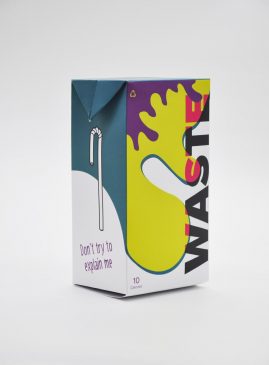
“Moving from collectible icons, we wanted to create a little giveaway with the packaging so we made stickers that come in different colors, and with each collection there’d be different stickers and different designs of the collectible icons,” Hany said.
Among Waste’s wide fan-base, Computer Science graduating senior Hania Wael is emphatic of her love for the experimental designs of Waste. She said that Waste t-shirts play with a lot of visuals and colors but manage to seamlessly work together.
“They’re the kind of edgy, oversized graphic T-shirts you’ll see on the street and go look for on ASOS (British online fashion and cosmetic retailer). They’re very retro but also kind of futuristic,” Wael told The Caravan.
She said that current consumers are obsessed with minimalistic designs and pastel colors but that’s not solely what Waste is.
“The brand’s aesthetics is based on absurdity and it’s really cool that it’s so minimalistic on the front, you might think you’ve seen it before, but then you turn the T-shirt around and it has so much work on the back,” Wael said.

